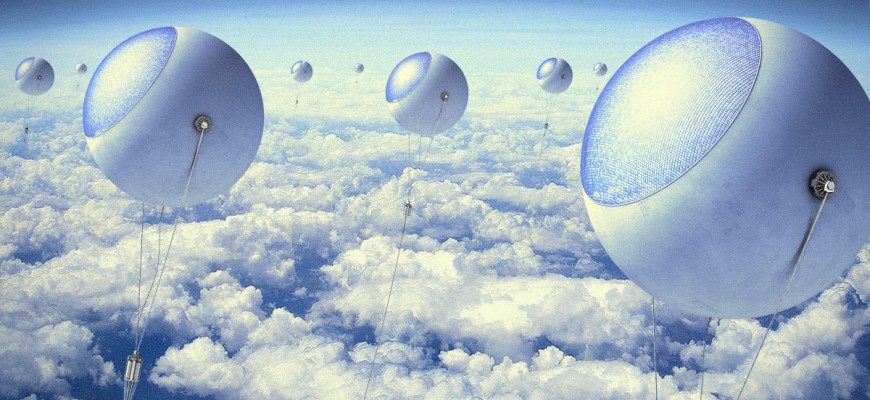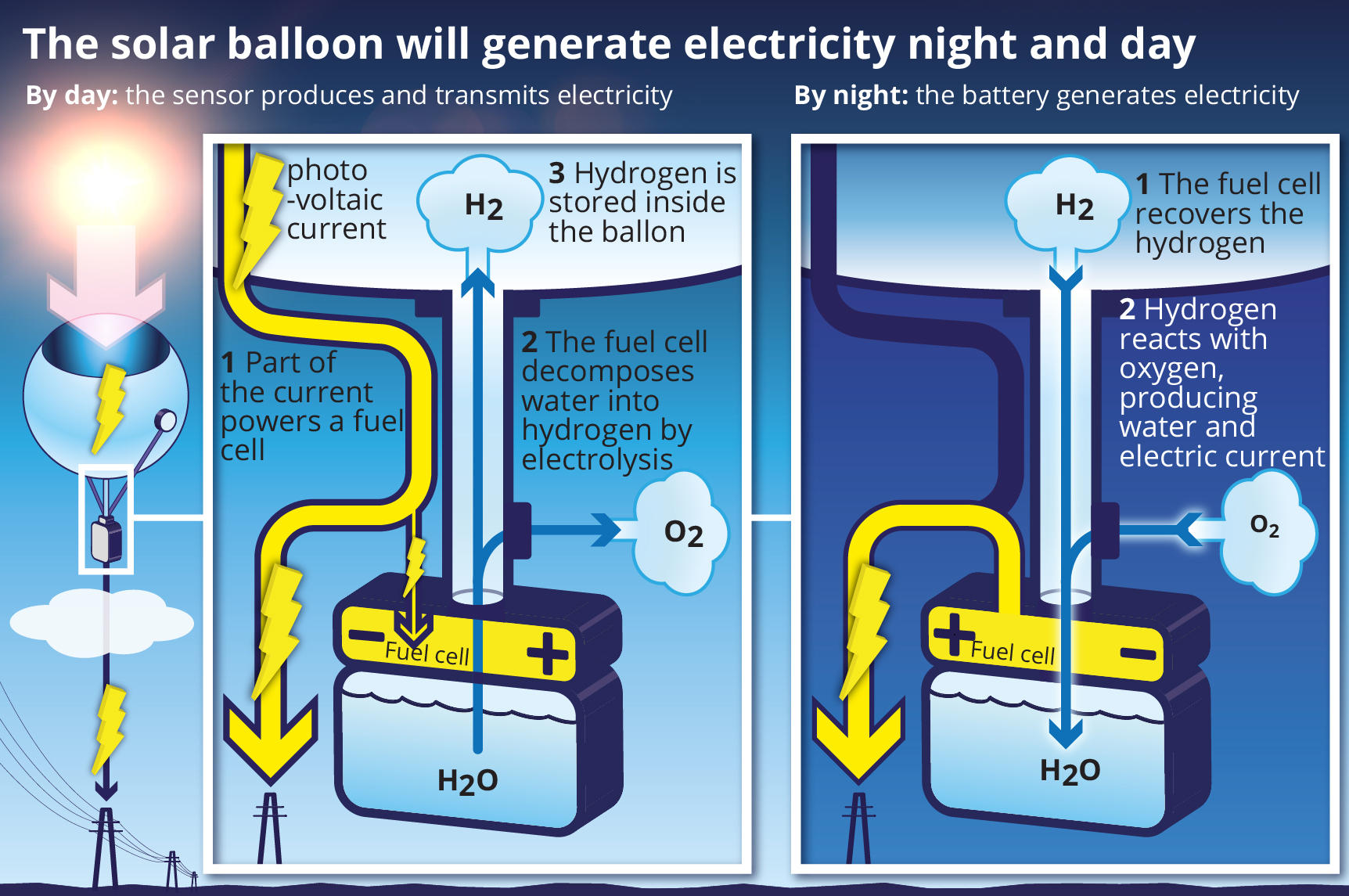
Solar Balloons to Power the Earth
Why wait for sunlight to reach solar panels? What if balloons were used to capture solar energy up in the sky where space is not restricted, where energy harvests could be multiplied and where there are no interruptions to light? A French researcher has had the idea to put solar cells on a hydrogen-filled polymer balloon and let it rise above the clouds which hinder the production of solar energy in order to get the maximum energy production.
“The main problem with photovoltaic energy is that sunlight can be obscured by clouds, which makes electrical production intermittent and uncertain. But above the cloud cover, the sun shines all day, every day,” says electro-chemist Professor Jean-François Guillemoles.
“Anywhere above the planet, there are very few clouds at an altitude of 6 km—and none at all at 20 km. Under these conditions, the energy source is five times more abundant than on the ground, and production is entirely predictable. So why not send solar cells up above the clouds, where the sun always shines?”
Above the clouds, the sun shines all day – everyday. Why not try and harness this energy. At this distance there is also no shadows and ‘hardly any diffusion by the atmosphere.’ Solar is 5 times more plentiful at these heights than it is on the ground – in addition, with unchanging conditions, production is much more predictable.

The hydrogen-filled polymer balloons are easy to mass produce and they will not take up precious space on the ground. The advantages just keep mounting up. Whether they are attached to the ground or floating free, the solar balloons would send energy back to the grid through a cable or transmitter as well as a portion used to produce hydrogen from an attached fuel cell. At night the fuel cell would take over and produce energy creating a stable supply of renewable energy.
“A moored high-altitude balloon of reasonable size could store about 10 days equivalent of its own solar electricity production, which is more than enough to meet energy needs overnight, until production resumes in the morning,” Professor Guillemoles says.
The French National Centre for Scientific Research (CNRS) and Tokyo University have set up a consortium named NextPV to research and further the technology and thinking behind the idea – an also the possibility of releasing a prototype solar balloon.
Seems like an eccentric idea that just might work – and everyone will benefit from it.
